Don’t Stop Using the Term ‘Cancel Culture’
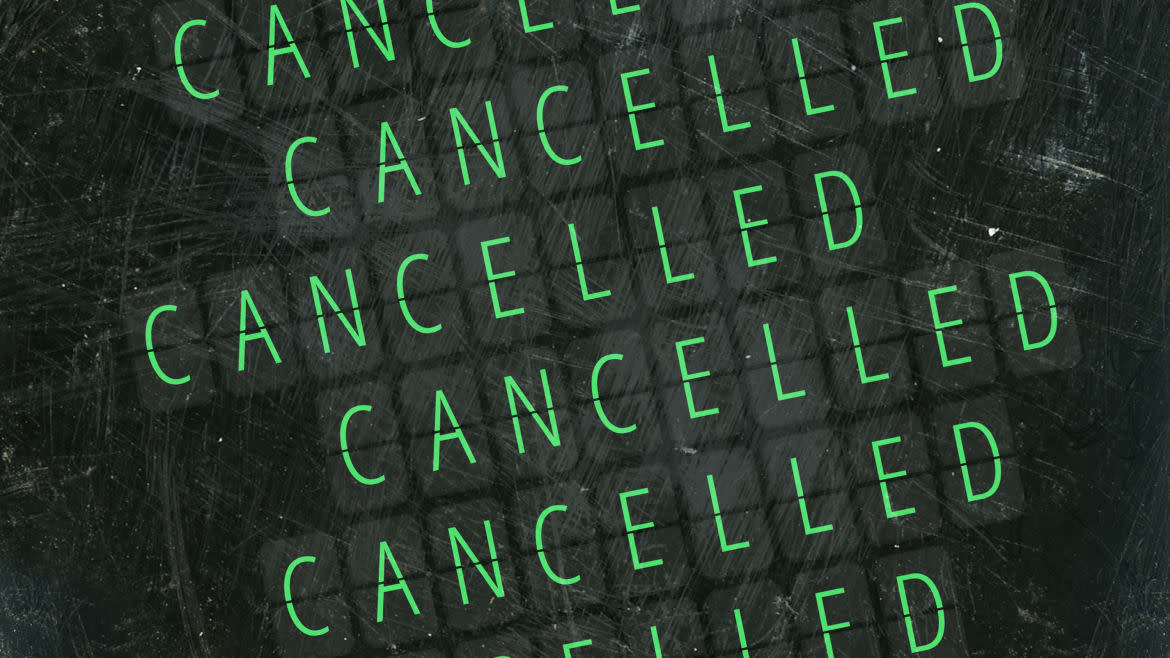
Few terms have been as abused as “cancel culture.” Its very existence is a point of controversy, despite the fact that large majorities both on and off campus feel pressured to censor themselves for fear of losing their jobs or reputations. But it’s a real thing—no matter how many ways its meaning has been wrongly distorted.
On March 3, Sergei Naryshkin, head of Russian foreign intelligence, accused the West of attempting to “cancel” their government for its invasion of Ukraine, echoing claims made by Vladimir Putin about alleged American cancel culture. Former New York Gov. Andrew Cuomo said the allegations of sexual harassment and a toxic workplace that led to his resignation were cancel culture. And, of course, former President Donald Trump has blamed cancel culture for just about everything—including the Jan. 6 committee’s decision to subpoena Roger Stone and Alex Jones.
Ridiculous non-examples of cancel culture, such as these, provide all the ammunition needed for media and academic elites to blithely wave away the phrase as nothing more than a misleading term for a fake problem.
But just because the term has been grossly overused doesn’t mean we should give up on its popularly understood definition—which aptly describes a real (and growing) problem. This is the measurable uptick, since around 2014, of campaigns to get people fired, disinvited, deplatformed, or otherwise punished for speech that is—or would be—protected by First Amendment standards. That’s “cancel culture.”
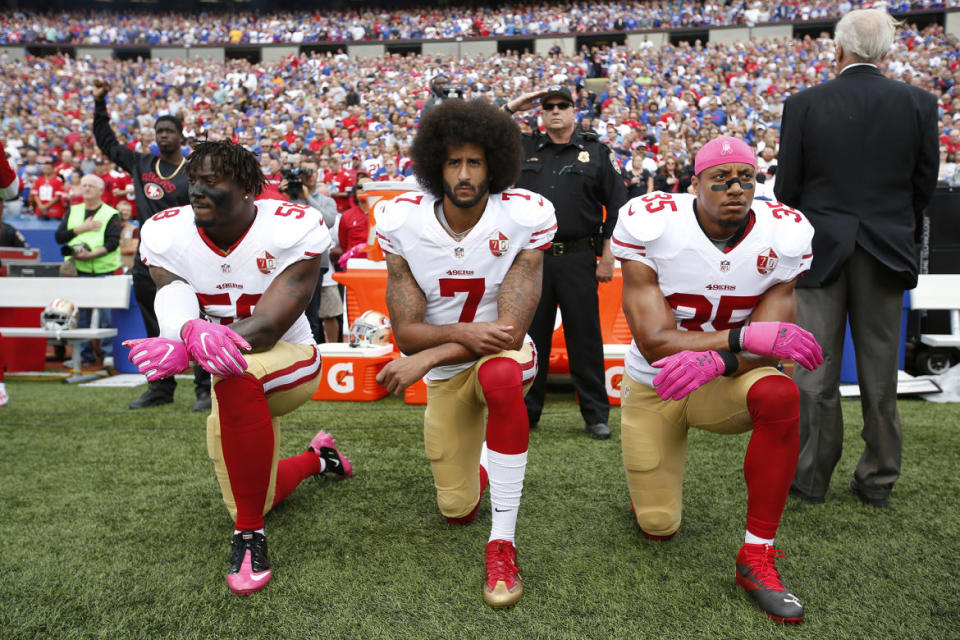
Eli Harold #58, Colin Kaepernick #7 and Eric Reid #35 of the San Francisco 49ers kneel in protest on the sideline, during the anthem, at New Era Field on October 16, 2016 in Orchard Park, New York.
We say “would be” because the First Amendment does not apply to private companies. So, while the NFL was free to punish Colin Kaepernick, and The View was free to suspend Whoopi Goldberg, these are still examples of cancel culture under our definition, because the subjects of each controversy engaged in expression that “would be” protected, were the First Amendment standard to apply.
What happened to Ilya Shapiro, David Shor, and Kathy Griffin? Cancel culture.
What happened to Andrew Cuomo, Jeff Zucker, Harvey Weinstein, Jan. 6 rioters, and the Russian military? Not cancel culture, despite their cries to the contrary.
Unfortunately, the meaning of “cancel culture” has been so badly damaged by these latter examples that some believe we should abandon the term and find a new one.
But that would be a mistake, not only because cancel culture, the phenomenon, is all too real, but also because “cancel culture,” the term, is an effective, widely understood descriptor. And despite the denialism surrounding its very existence, we will demonstrate through empirical data and polling that cancel culture is not only a real problem, it is one that continues to expand in scope and size.
It’s not just anecdotal, the data show cancel culture is real
We know we will face stiff resistance for standing by the idea that cancel culture exists.
In the past few weeks alone, The New York Times came under the withering scrutiny of the elites by running two pro-free speech opinion pieces. The first, an op-ed titled “I Came to College to Debate. I Found Self-Censorship Instead,” by former FIRE intern Emma Camp, was met with reasonable criticism, some praise, but also such an immediate and prolonged backlash across the internet that you’d think Emma wrote Mein Kampf, not a defense of open debate and discussion on campus.
The second piece—published by The New York Times’ editorial board—argued that Americans are losing “the right to speak their minds and voice their opinions in public without fear of being shamed or shunned.”
Though the use of the word “right” in this context was unfortunate—there is absolutely no legal right not to be shamed or shunned—too many elite critics with large followings used this as an excuse to dismiss the larger message of the piece. Some critics even demanded that the piece be retracted and its writers resign.
But The New York Times’ claim—that “[h]owever you define cancel culture, Americans know it exists and feel its burden”—was not outlandish. Far from it. Our own research corroborates it.
A survey commissioned late last year by FIRE, where we work, found that 73 percent of Americans are familiar with the term “cancel culture.” Of those, nearly 60 percent believe “there is a growing cancel culture that is a threat to our freedom”; only 25 percent do not. Additionally, 70 percent of those surveyed said they were afraid to say what they believe because they were worried it could impact their job or standing in school.
Other surveys of the American public have produced similar findings.
The UK-based Legatum Institute found that 50 percent of academics in the U.S. feel the need to censor their own political beliefs while on campus. These academics are making a prudent decision; more than one in three faculty admit they would discriminate against conservatives when making hiring decisions. Moreover, nearly one in four social science or humanities faculty—and almost one in two social science or humanities Ph.D. students—surveyed in the U.S. supported at least one campaign to dismiss a dissenting academic.
Simply put, study after study decidedly shows cancel culture not only exists, but also that, in too many places, it is thriving.
Cancel culture is getting worse
One of the most vocal critics of The New York Times editorial is journalist Adam Davidson. He asked, “Can one of you believers in cancel culture just write one piece that gives evidence and doesn’t just speak to a feeling you have?”
Yes, we can. On campus there are hundreds of examples in only the past few years limited just to scholars, and likely thousands if you count students, which is amazing because 80 percent of students at not-for-profit four-year colleges attend only about 600 schools. (We are gathering data on student cancellations, but from the approximately 1,500 incidents we look at each year, we already know that students get in trouble far more often than professors.)

Stanford students hold signs as they stage a protest outside of Dinkelspiel Auditorium where former U.S. Vice President Mike Pence is scheduled to speak at the Advancing Freedom Lecture Series at Stanford University on February 17, 2022 in Stanford, California.
We work on college campuses, where cancel culture hit first and hardest, so we know that cancel culture is more than just a “feeling” people have. Since 2015, we documented 563 attempts (345 from the left, 202 from the right, 16 from neither) to get scholars canceled. Two thirds (362 incidents; 64 percent) of these cancellation attempts were successful, resulting in some form of professional sanction leveled at the scholar, including over one-fifth (117 incidents; 21 percent) resulting in termination. When Greg joined FIRE in 2001, the idea of one tenured professor being fired for protected speech seemed impossible, yet since 2015 there have been 30.
The problem has only gotten worse, particularly over the past few years. Just since the start of 2020, there have been 283 cancellation attempts. Scholars are canceled most often for expressing a personal opinion (338 incidents; 60 percent), encouraging discussion of sensitive material (145 incidents; 26 percent), or presenting a scientific argument (136 incidents; 24 percent).
Since 2015, there have been 163 investigations, 117 terminations, 109 suspensions, 48 resignations, 45 censorship incidents, 33 demotions, 18 retractions, and 13 mandatory trainings—all for ideological reasons.
When you include schools with scholar-sanction attempts, schools where FIRE intervened by writing letters and/or providing legal assistance, schools with restrictive speech codes, and schools that disinvited guest speakers, 97 of U.S. News’ top 100 schools have perpetuated some form of censorship since 2015.
College cancel culture is worse than ever
The cancellation attempts matter even when they don’t succeed, because they demonstrate a decrease in tolerance for a wide range of views on campus. Greg has defended free speech on campus for over 20 years and knows firsthand that there have always been contentious debates, but trying to get scholars fired for their “bad” views was relatively rare. Not so anymore.
Take, for example, Concordia University’s recent suspension, without due process, of philosophy professor Gregory Schulz for writing an article criticizing the university for “coming under the influence of Woke-ism,” which Schulz argued is antithetical to the university’s Lutheran foundation.
Or the case of Richard Taylor, a former adjunct history professor at St. John’s University. He gave a presentation to his class about the Columbian Exchange, the interchange of people, resources, and diseases between the Eastern and Western hemispheres after Columbus’ arrival in the Americas. At the end, he asked students, “Do the positives justify the negatives?” For this, he was accused of being “a dangerous threat to the education of [the] student body.” On the bizarre basis that his question represented advocacy for slavery, he was fired for violating the university’s Policy against Bias, Discrimination, and Harassment.
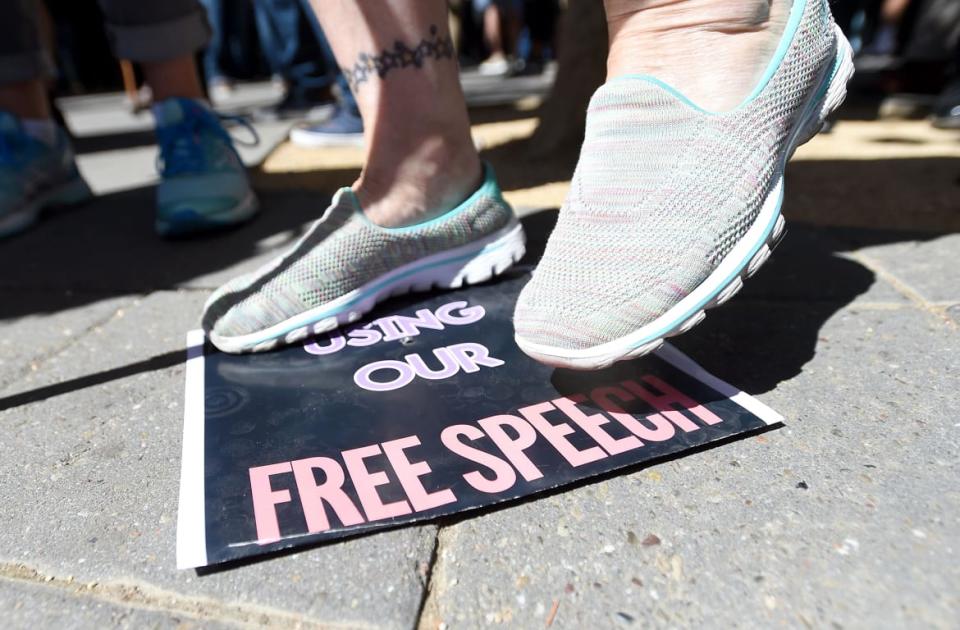
A woman stomps on a free speech sign after conservative commentator Milo Yiannopoulos spoke to a crowd of supporters on the University of California, Berkeley campus on September 24, 2017.
And let’s not forget Asheen Phansey, a former adjunct business professor at Babson College who was fired for joking that in response to former President Trump’s threats to target Iranian cultural sites, Iran’s leader should target Minnesota’s Mall of America and one of the Kardashian family’s homes.
One doesn’t have to look closely to find evidence of cancel culture at elite institutions. Harvard, Stanford, and Georgetown—highly influential schools which have very low viewpoint diversity to begin with—each average 15 attempts to sanction scholars since 2015; two-thirds of which occurred since 2020. But cancel culture’s influence hasn’t stopped there—the phenomenon is also prevalent at lesser-known colleges and universities throughout the country.
At Kirkwood Community College, for example, professor Jeff Klinzman’s criticism of former President Trump went viral, leading the president of the college to demand Klinzman’s resignation (Klinzman eventually settled with Kirkwood and FIRE represented him during the negotiations).
And let’s not forget professor Lisa Durden of Essex Community College. She went on Tucker Carlson’s Fox News show to defend a Black Lives Matter event and was fired by Essex. The college president claimed the school was “inundated” with “feedback from students, faculty and prospective students” who expressed “fear” about Durden. This claim ended up being a vast overstatement, to say the least. Records obtained by FIRE reveal that administrators had already decided to take action before any member of the public contacted them, and only one person complained to the university in the first 13 days after Durden’s Fox appearance.
If you follow our work at FIRE’s website you can find plenty of regular new examples, and because we assume readers are skeptical we link to documentation in each case.
Conservative hypocrisy, progressive denial
The perpetuation of cancel culture is bipartisan: Conservatives criticize it, while practicing it; progressives deny it, while being victims of it.
Over the past year Republican legislators introduced a series of anti-critical race theory (i.e.,“divisive concepts”) bills seeking to restrict teachers’ ability to teach topics related to race and sexuality. These bills, when applied in higher education contexts, are almost always unconstitutional.
Pennsylvania’s HB 1532, for example, violates long standing academic freedom commitments by banning all instruction about “racist” concepts and prohibits campuses from hosting speakers who espouse any “racist” or “sexist” concepts.
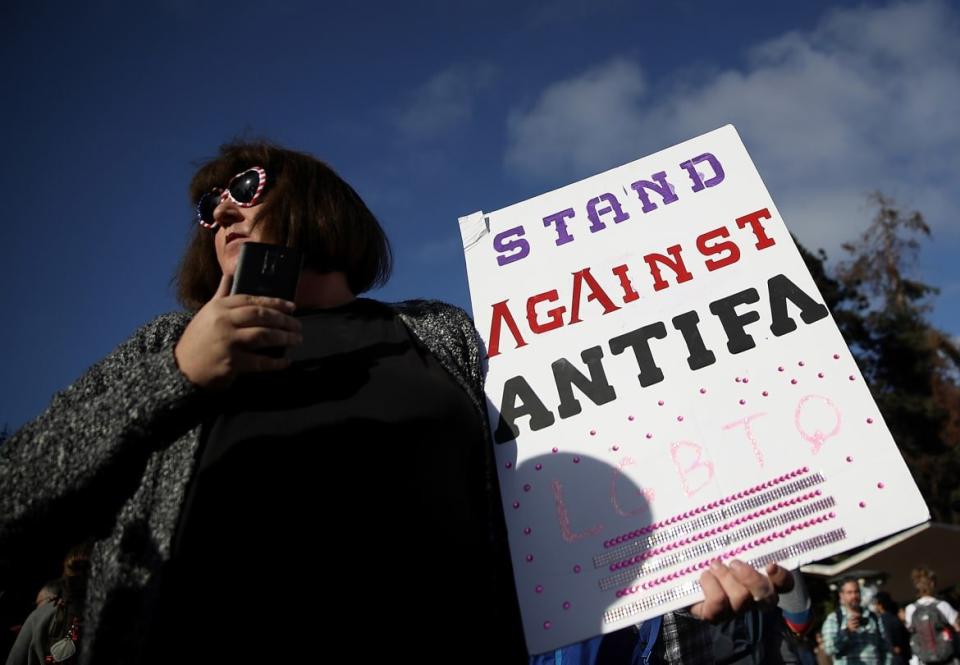
A protester holds a sign during a demonstration outside of Zellerbach Hall on the U.C. Berkeley campus on September 14, 2017 in Berkeley, California. Police are out in force as protesters are assembling outside of Zellerbach Hall at U.C. Berkeley where conservative political commentator Ben Shapiro is scheduled to speak.
Republican legislators in more than a dozen states have filed similar bills that would ban discussion of “divisive concepts” in college classrooms, violating more than 65 years of Supreme Court precedent protecting academic freedom. (FIRE actively opposes these bills.) Iowa and Oklahoma’s state legislatures introduced bills specifically designed to ban the teaching of The 1619 Project in college classrooms. Prohibiting discussion of these topics also prohibits criticism of the ideas, which limits students’ intellectual development.
These bills contribute to the cancellations of individual faculty. In 2021, Christopher Busey, an associate professor of education at the University of Florida, claimed he was threatened with discipline if he used the phrase “critical race” in his curriculum. Also in 2021, Maryland Republican Rep. Mark Green, (who previously introduced a bill banning critical race theory) wrote to the United States Naval Academy demanding the termination of Lynne Chandler García, an associate professor of political science, over her op-ed on why she teaches CRT.
Though conservatives talk a good game about defending “free speech” and decrying “cancel culture,” hypocrisy among the movement is not new. In 2017, three Nebraska Republican legislators sponsored a bill to protect free speech on campus, then called on the University of Nebraska to fire graduate teaching assistant Courtney Lawton for her progressive political activism.
Meanwhile, some progressives remain so committed to denying cancel culture is a problem they won’t even admit it exists even after they themselves are canceled.
Consider Will Wilkinson, the former vice president of policy at the Niskanen Center, who was fired in 2021 for tweeting, “If Biden really wanted unity, he’d lynch Mike Pence,” for which he later apologized. Conservative news sites such as The Federalist and The Daily Caller condemned Wilkinson, and a Twitter mob ensued. Despite losing his job because of cancel culture, Wilkinson continues to dismiss the phenomenon, characterizing cancel culture as “conservative hysteria” and a “boogeyman.”
Lora Burnett, a former history professor at Collin College, represents another example of cancel culture denialism among the canceled. In 2021, under pressure from Texas Rep. Jeff Leach and conservative news outlets, Collin College terminated Burnett for tweeting, during the vice presidential debate, that Mike Pence needed to shut “his little demon mouth up.” Burnett, represented by FIRE, filed a First Amendment lawsuit and ultimately accepted the college’s offer of $70,000 and attorneys’ fees. Yet Burnett later wrote an article arguing “There is no such thing as ‘cancel culture,’” adding, “There are social mores, norms of public behavior and expression…one of the sources of pressure that shape these social norms, are public denunciations for shameful behavior.”
Based on Burnett’s framework, there is no way to determine whether social pressure is legitimate or illegitimate; it is decided by faculty and administrators, groups that are overwhelmingly politically homogeneous and averse to controversy.
Burnett and Wilkinson could have recognized that the intolerance fueling cancel culture is bipartisan. However, that would require admitting that their side, too, has an intolerance problem.
When such denial occurs, conservatives are correct to assert that progressive ideology can overtake reason.
Those who subscribe to such an unprincipled, self-serving definition will only oppose the sanctioning of those who share their own opinions, rather than opposing illegitimate sanctioning based on the principle that free expression must be protected.
Elites should not get to decide what terms we use, and that includes ‘cancel culture’
Some believe that because “cancel culture” is used too often and too broadly to describe speech and actions which may simply constitute criticism, we should abandon the term entirely, and replace it with something else.
However, to abandon the term “cancel culture” is to capitulate to those who pretend the problem doesn’t exist, while isolating the majority of Americans who are anxious about being canceled but may not have the time (or interest) to keep up with ever-changing, elite-approved lingo.
When elites seek to control the terminology, they often do so for the purpose of signaling in-group membership. Doing so often excludes the vast majority of Americans from the conversation.
For example, although the term “Latinx” is popular within our news media, entertainment industry, corporations, politics, and universities, Pew Research found that only 3 percent of Latino adults use the word. It is an example of what James Carville calls “faculty lounge” language. As author Helen Pluckrose points out, modern social justice advocates derive power from controlling language. As the language changes, people who use an outdated term or phrase are quickly dismissed as ignorant or uneducated.
This happened with “political correctness.” Originally a term widely understood to mean “excessively politically doctrinaire”—and coined by people on the left to make fun of their own ideological rigidity—it became popular in the 1980s and 1990s as a way of deriding the “speech police” on campus.
But the desire to control language only grew stronger as campuses became less ideologically diverse. Speech codes—which we define as policies that prohibit speech which outside of campus boundaries would be protected under the First Amendment—quietly increased in number after being soundly defeated in both the court of public opinion and courts of law by the mid-1990s. At the same time, elites attempted to rehabilitate the meaning of “political correctness” as something akin to “politeness.”
And yes, it is natural that the meanings of words evolve—just as it is natural that certain forms of humor and words can be deemed less acceptable (or unacceptable) over time. But “P.C.” had a specific meaning, and retroactively manipulating that meaning in the service of a present-day political takedown is disingenuous.
Consequently, we have ended up in the bizarre situation revealed by the Hidden Tribes study, wherein the overwhelming majority of people across ages and races say that political correctness is a problem, but less than a third (30 percent) of the farthest-left “Progressive Activists” (who comprise 8 percent of the population) say the same.
This tiny group wields enormous power on Twitter, on college campuses, and in the media, where speech policing is sometimes perceived as a means of social progress. If we change language to try to appease a small group that denies the existence of cancel culture and insists that free speech is merely a tool for the powerful (which is the exact opposite of what has been the case throughout history), we will exclude most Americans from the discussion of an issue that affects them.
At an earlier time in American history, the idea that the highly educated should set the standard for how the rest of us talk was generally—and rightfully—mocked. We see this mockery of elite language throughout the history of American entertainment, from Bugs Bunny to Humphrey Bogart, from comedians like George Carlin to famous musicians like Pearl Jam, The Notorious B.I.G., Bruce Springsteen, Bob Dylan, and Walker Hayes. Furthermore, from the ’80s through today, rappers like NWA, 2 Live Crew, Run The Jewels, and Eminem have used, to quote the parental advisory labels, “explicit content,” to speak about issues, like abusive policing, that elite white Americans often preferred to ignore.
All of these cultural icons challenged the pretensions of what Michael Lind dubs “the overclass,” who want the public to abide by their social dictates. Today, the response from non-elites should be: “We know you know what I'm talking about and, no, you don't get to dictate precisely how I say it.”
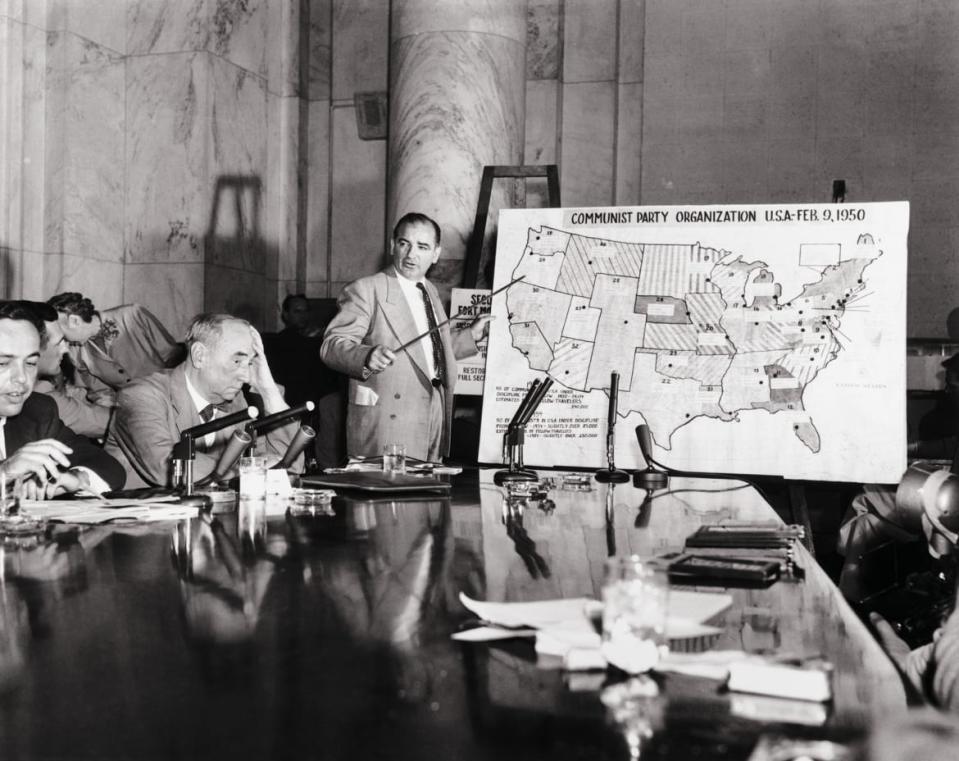
Joseph McCarthy, Republican senator from Wisconsin, testifies against the US Army during the Army-McCarthy hearings in Washington, DC, on June 9, 1954.
Let’s not abandon the term ‘cancel culture’ and let’s not forget history
Despite the dismissive attitudes, there is ample evidence of a growing number of campaigns to get people fired, disinvited, deplatformed, or otherwise punished for speech that is—or would be—protected by the First Amendment. This is cancel culture.
One has to wonder if those dismissing the 563 scholars targeted since 2015 and the 283 scholars targeted just since the start of 2020 know anything about the history of free speech.
We still rightfully look back at the Sedition Act of 1798 with shame despite the fact that “only” 51 people were prosecuted. The Espionage Act of 1917 resulted in “only” about 2,000 prosecutions in the whole country, and the population of the U.S. was over 120 times greater than the present number of college faculty in the country. Even the Hollywood Red Scare of the 1950s “only” targeted around 300 Americans and we still make movies about it. In this context, we have every reason to believe that future generations will not view the cancellations that occur today as a minor historical footnote.
The minimizers forget that an injustice involving one individual can cast a dark shadow over our nation’s history. After all, we still remember the censorship of Lenny Bruce and Salman Rushdie decades later. For that matter, Dreyfus, Socrates, and Galileo were mere individuals, but that doesn’t stop us from being rightfully outraged by their treatment even centuries after the fact.
A culture of censorship—of shaming, shunning, and attempting to destroy people’s lives for ideological reasons—exists in America, and Americans have a name for it: cancel culture.
Let’s not abandon that name in a vain attempt to please the people most responsible for perpetuating the problem.
Get the Daily Beast's biggest scoops and scandals delivered right to your inbox. Sign up now.
Stay informed and gain unlimited access to the Daily Beast's unmatched reporting. Subscribe now.

